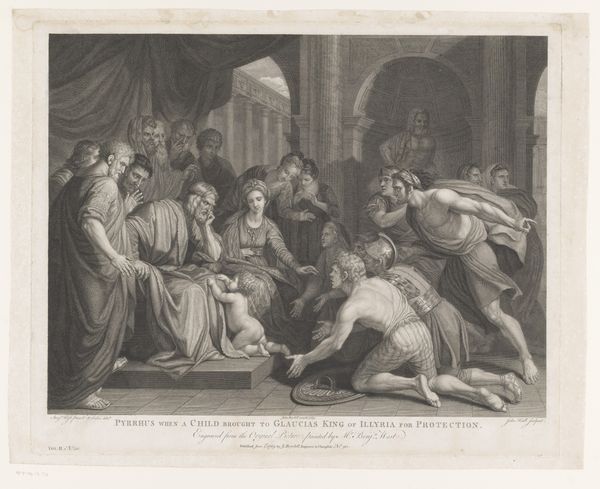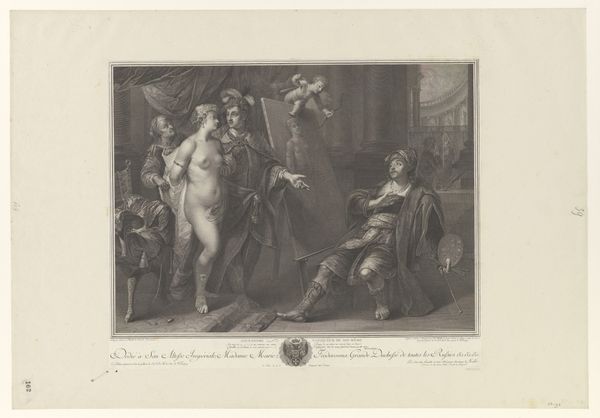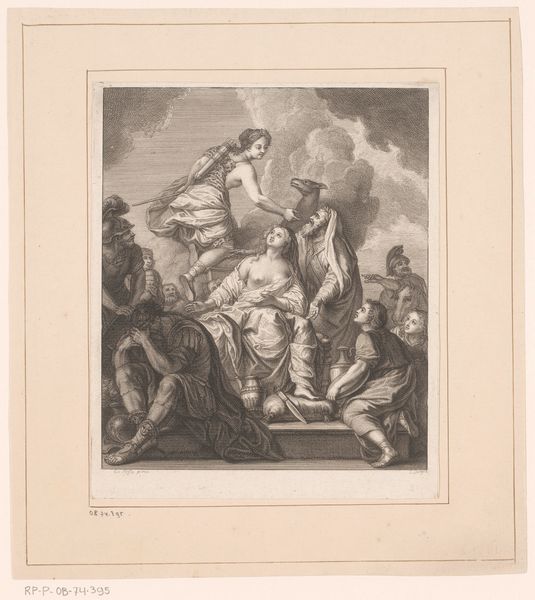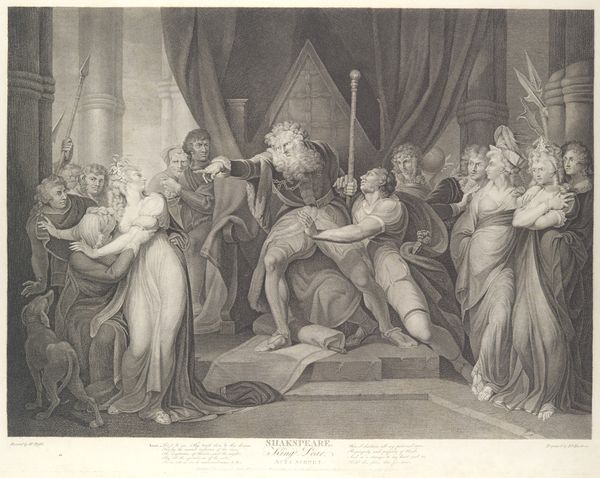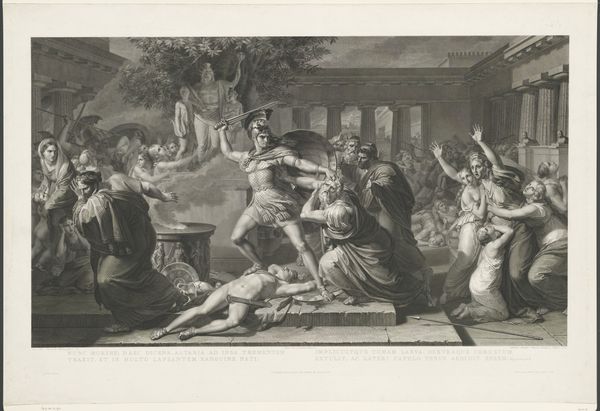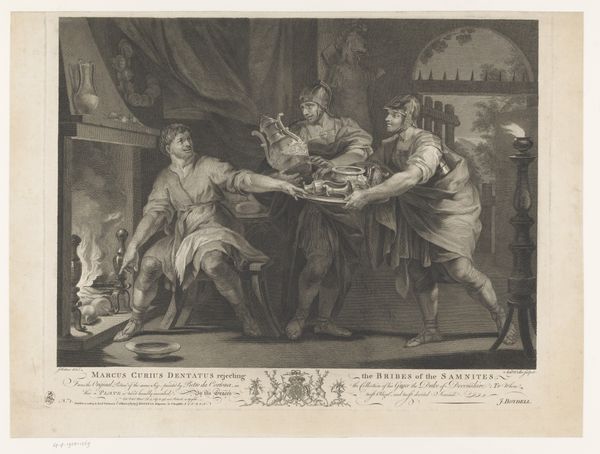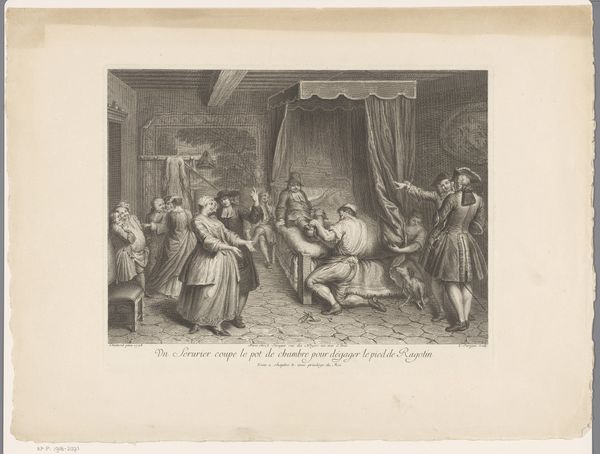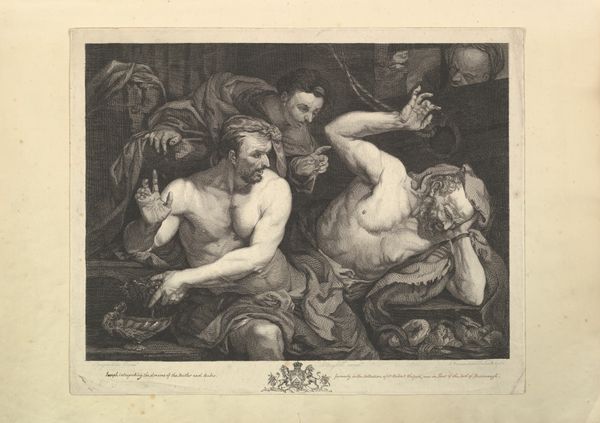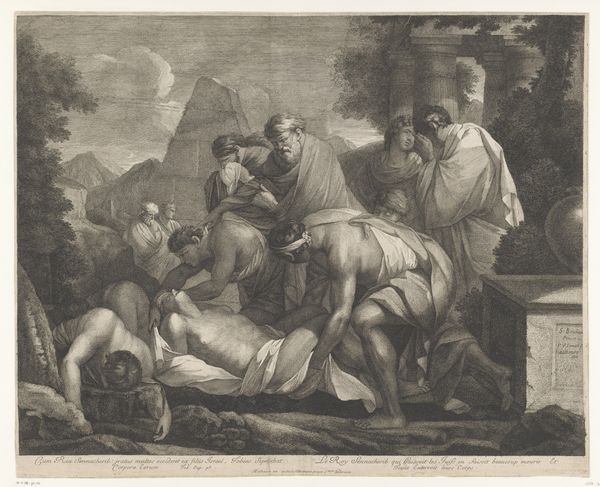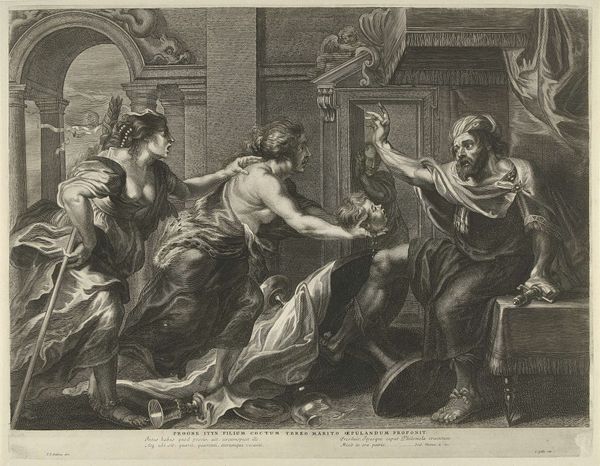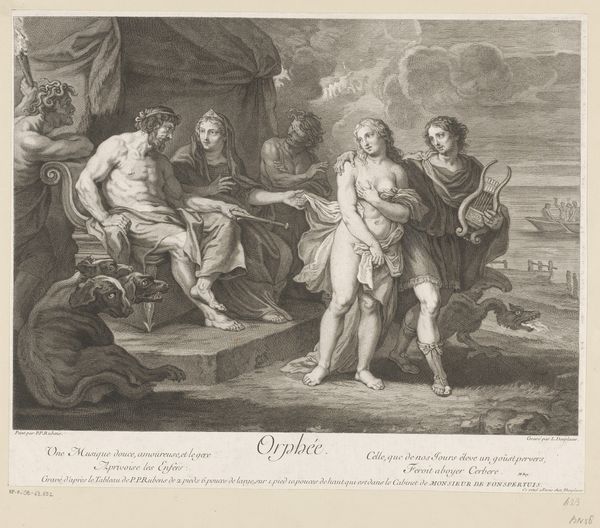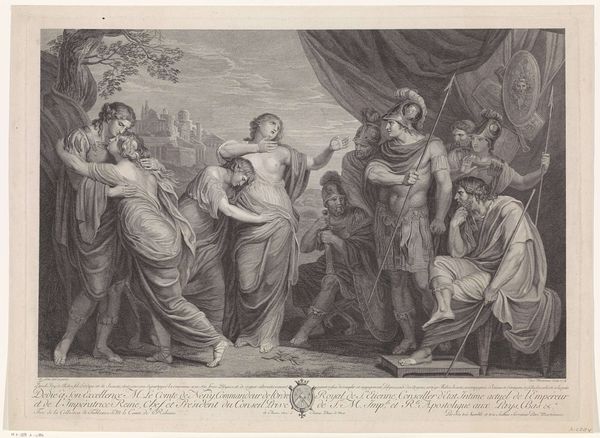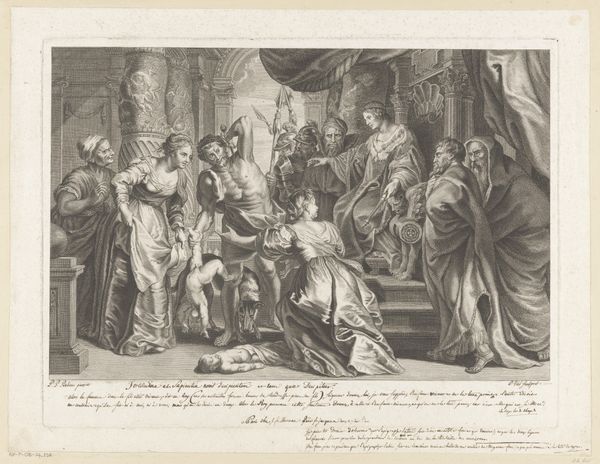
Dimensions: height 478 mm, width 599 mm
Copyright: Rijks Museum: Open Domain
Curator: Let’s turn our attention to "The Continence of Scipio," an engraving created in 1766. It's currently held at the Rijksmuseum. My immediate response is one of slightly overwhelming density – there's so much happening, visually. Editor: Overwhelming is a great way to put it. The composition is certainly crowded but classical realism tends to emphasize details. I can only imagine the social climate during this time. With colonialism on the rise and so many assumptions about race, class, and gender during the 18th century... this piece almost feels allegorical for cultural domination, framed, in some ways, as benevolence. Curator: Benevolence... or perhaps indifference? It strikes me that the process of making an engraving involves meticulous labor, almost industrial in its precision and it makes me think about whose hands made this work, how long it took, and the accessibility to viewers during the enlightenment. Engravings can be widely distributed. How does its dissemination affect the story? Editor: That labor question is key, absolutely. We see Scipio seemingly 'gifting' this woman back to her betrothed, as some act of noble, imperial gesture. Where’s her agency? Where's the recognition of her own self-worth outside of this transaction? I think the black servants on the periphery and lower than Scipio add another layer of interpretation here too, this image has the stench of inequity embedded into its composition and visual messaging, in my opinion. Curator: The choice of the story itself speaks volumes. Scipio, a Roman general, portrayed as merciful, but it begs the question, "Merciful according to whom?" What narratives were centered in order to sustain power dynamics? Editor: Right! The engraving becomes a tool – maybe even a weapon – for disseminating specific values, ideas, notions about power, about who "civilized" and the “uncivilized” are, right? Curator: Definitely, that all goes into how the culture of domination begins to work at multiple levels. It leaves me pondering the ethical responsibilities surrounding representation and how even acts deemed "generous" are embedded in networks of privilege. Editor: Exactly, this is less about celebrating magnanimity and more about excavating the structures it’s built upon. Curator: Ultimately, looking at these historical materials, we are made more aware of our own context. Editor: Agreed. An image can be telling for its intended messages but equally if not more compelling in terms of its silences and implications.
Comments
No comments
Be the first to comment and join the conversation on the ultimate creative platform.
